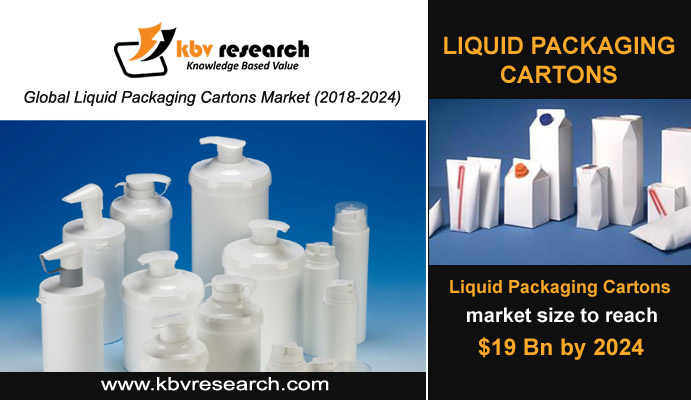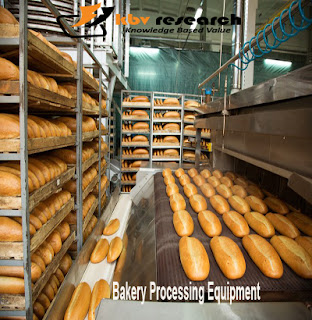A Paradigm Shift to Eco-Friendly Packaging With Liquid Packaging Cartons
Cartons ensure longer product shelf-life, minimal
wastage, and comfort, which remain some of the main reasons for sustained
global sales of liquid packaging carton. Factors such as the recycling ability
and environmental friendliness of liquid
packaging cartons have been observed to attract beverage producers to adopt
innovative packaging materials to introduce new packaging solutions on the
global market place for these cartons.
Demand for innovative packaging cartons will continue to
rise in the immediate future. Worldwide, consumers are increasingly
inclined towards recyclable, biodegradable and environmentally sustainable
packaging, which is likely to drive beverage manufacturers to move away from
standard packaging solutions. Additionally, government support for low carbon
footprint products has been recognized as a significant factor responsible for
the demand for liquid packaging cartons.
What is a Liquid
Packaging Carton?
Packing food or beverage is a process used to guarantee the
preservation, containment, marketing & information, tracing, convenience
and other functions of edible products. Liquid cartons are containers that
enable safe transport and storage of fluid products and customized packaging as
per the marketing requirements of the manufacturers. Because of these cartons'
convenience, maneuverability, reusability, and environmental benefits,
manufacturers prefer them. The products are specifically designed to transport
liquids such as milk & dairy products, packaged water, liquid food, soft drinks,
and juices.
 |
| Global Liquid Packaging Cartons Market (2018-2024) | KBV Research |
Beverages can be found in a variety of packaging styles,
including cans, bottles and cartons. Among these, cartons have emerged as the
latest packaging design. While cartons are usually served with a straw to drink
from, manufacturers have started putting caps on them. Cartons are efficient,
recyclable and easy to ship. Liquid packaging cartons are also known as
beverage cartons, are commonly used to protect fresh drinks and food items,
allowing distribution either at room temperatures or under cold conditions.
Why is there a need
for Liquid Packaging Carton?
Manufacturers are exploring alternatives such as plant-based
fibers in the context of the current intensive examination of plastic
packaging. For example, micro-fibrillated cellulose (MFC) breaks down plant
fiber to micro-levels and is reconstituted as a packaging material. This
process can produce materials stronger and lighter than glass or carbon fibers
and can be supplemented with MFCs to reinforce other packaging materials. Robots
are also transforming the packaging industry, particularly in the field of
ecommerce.
The ability of the robotic arms to quickly and accurately
sort small items in delivery boxes has made them favored by manufacturers and
retailers. Robots provide flexibility since the arms can be positioned and
replaced for a number of jobs while reprogramming the systems to change the
packaging functions. Since packaging became a "thing" in the internet
at first, it has spread far beyond the shelf in its customer journey. This has
transformed in many ways, including in complex global supply chains and
healthcare environments, so that doctors can monitor their patients through
connected medical packaging.
Advantages of using
the liquid packaging carton:
A liquid packaging carton enables safe transport and storage
of products such as juice, milk and other fluids. Liquid packaging cartons are
available in various sizes and shapes on the market and can be easily designed.
Their easy-to-design feature allows these cartons to be catered as required by
the packager. They are easily moldable, cheap, sustainable and renewable
compared to conventional packaging systems and add to market growth.
Favorable features like lightweight, long shelf life and
biodegradable properties of liquid cartons dramatically increase their demand
across a variety of end-use industries. Additionally, when discarded, these
cartons can be easily flattened and take up less space in the bin. The rapid
growth of this industry is attributed to the increase in demand for packaged
food & beverages, convenience in transport, innovation in packaging, and
recyclability of cartons. In addition, an increase in soft drink consumption is
expected to increase market growth for liquid carton packaging over the projected
period of time.
Why should a company
think twice before using a liquid packaging carton?
Any new innovation that arrives the market
environment has its pros and cons. Despite constant modernizations, there
are chances of the product having some or the other loophole. This is the
case with cartons for liquid packaging. To begin with, the availability of
substitutes for liquid packaging cartons is quite high. For example, there is a
growing demand for glass packaging that runs with the adoption of carton packaging
at a constant pace. With high packaging consumption, the environmental impacts
of packaging could be significant. More than half of all goods are packaged in
plastic in several countries. As a result, a complete understanding of the life
cycle of plastic packaging requires a reduction of greenhouse gases and
landfill waste.
Liquid Packaging
Cartons- The Present and the Future
The liquid packaging carton industry has positive growth
potential. The inclination of the population towards packaged food and beverages
is a key driver of growth. Consumer preferences for ready-to-carry food have
led to tremendous progress for these cartons. The growing environmental issues
on the use of plastic packaging, the recyclable nature of carton packaging, and
the convenience of using this packaging are some of the drivers that
ensure this industry's proliferation.
Demographics, economics, and sustainability are some of the
factors that will regulate the market. Innovation in packaging technology and
the use of renewable materials can open up significant opportunities for
evolution. Social changes affect packaging demand in unexpected ways. There is
a growing need for greater convenience and increasing demand for ready-to-drink
and on - the-go foods and beverages. The result is an increasing demand for
smaller pack sizes in different food and beverage sectors. Smaller packs devour
more liquid paperboard to pack the same quantity of product, leading to
increased raw material consumption. In the coming years, each influential
factor is expected to collectively boost the global liquid
packaging carton market at a CAGR of 6.1%.



Comments
Post a Comment